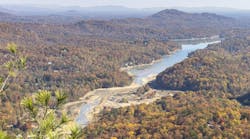
Twice before, this blog has covered the Zika virus and the connection between the mosquitoes that transmit it and standing water in stormwater structures. The first mention was in January when news of the virus was still fairly new. A few weeks later I mentioned the use of genetically modified mosquitoes to try to reduce the Aedes aegypti population in Brazil.
Now it seems there is a second type of mosquito that can also spread the Zika virus, and it favors slightly different habitats than the first. While Aedes aegypti is found mostly in tropical and subtropical regions—and thus in relatively few US states—Aedes albopictus, also known as the Asian tiger mosquito, lives in temperate regions as well, potentially giving the virus a wider range. Both species can lay eggs in manmade containers—flowerpots, abandoned tires, Fido’s water dish—and so are well adapted to breed in urban areas. But because Aedes albopictus also feeds on animals—as opposed to its counterpart, which much prefers humans—it might be less prolific at transmitting the virus from person to person.
Most of us have probably been following various news items about the virus, whether we want to or not: the fact that it can be spread by sexual contact, the new warnings from the World Health Organization advising pregnant women to avoid travel to affected areas, the ongoing research into the connection between Zika and microcephaly and other conditions. If you’re looking for a quick recap of what we know so far, this graphic presentation from the Washington Post provides a good summary, including possibly more information than you wanted to know about just how mosquitoes transmit viruses. If you want even more detail, this article from the March/April 2002 issue of Stormwater—co-authored by public health biologists, vector-borne disease specialists, and stormwater experts—is still an excellent primer on the lifecycle of mosquitoes, environments in which they do and do not thrive, and their relationship to stormwater infrastructure.
About the Author
Janice Kaspersen
Janice Kaspersen is the former editor of Erosion Control and Stormwater magazines.

